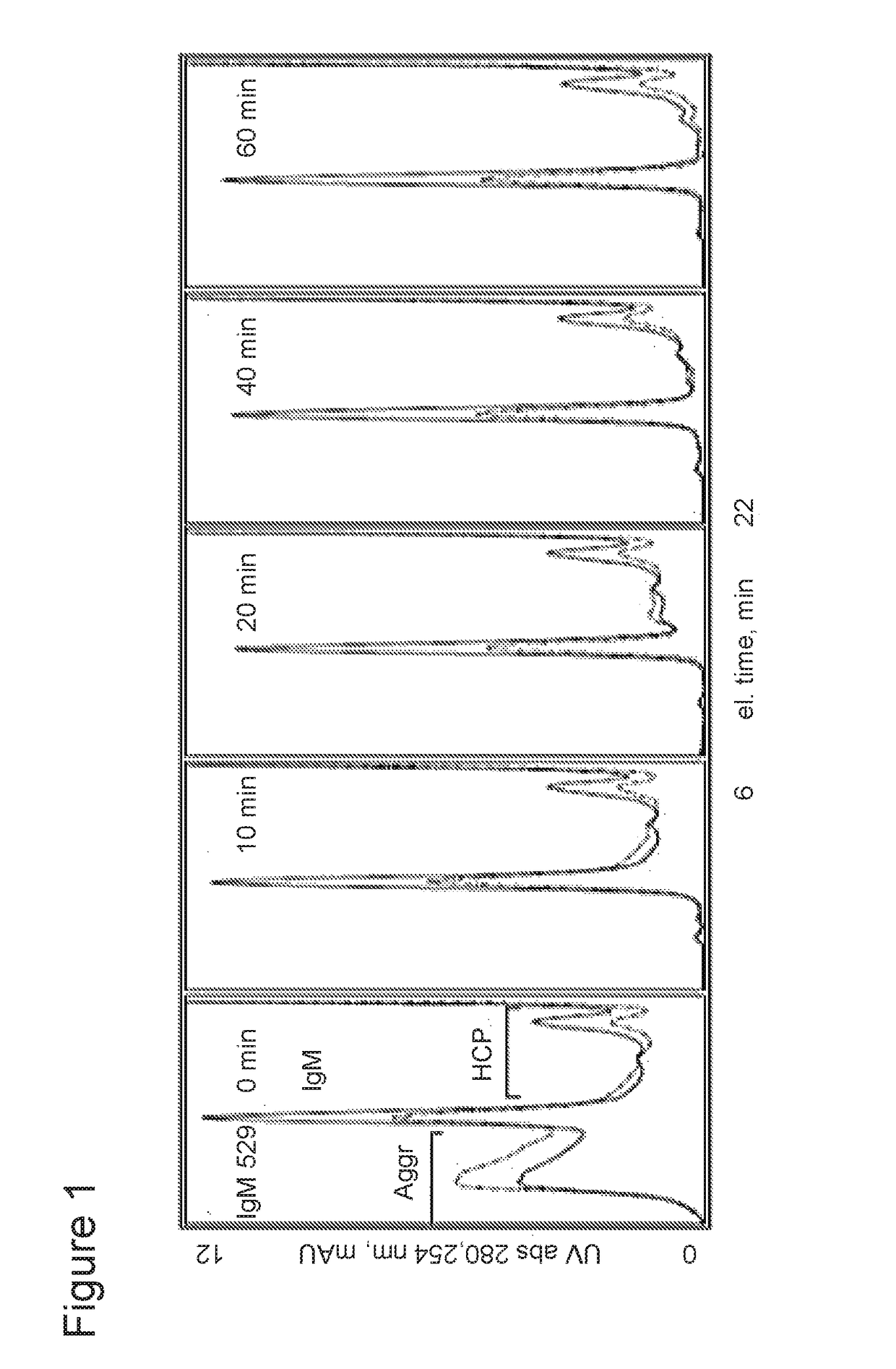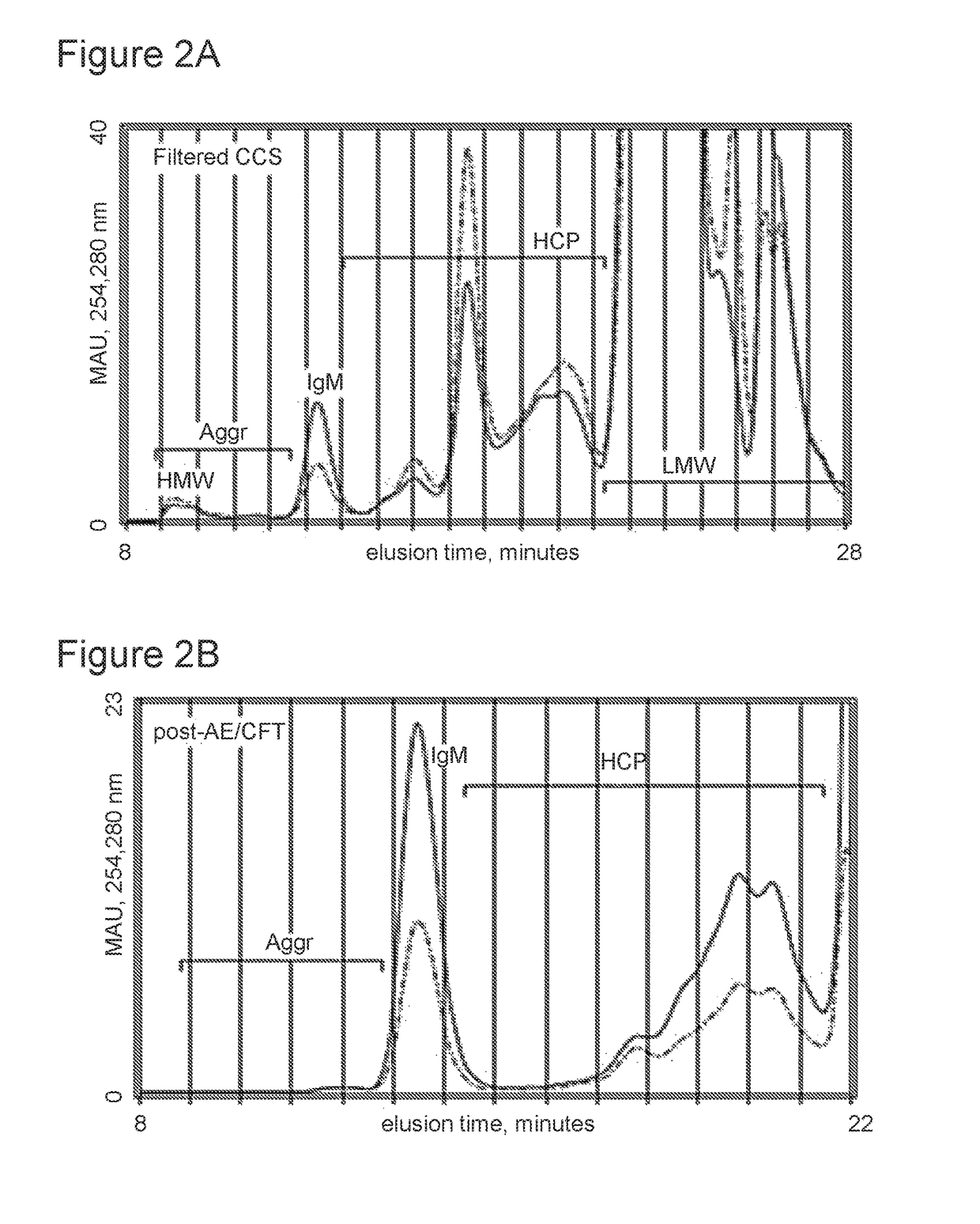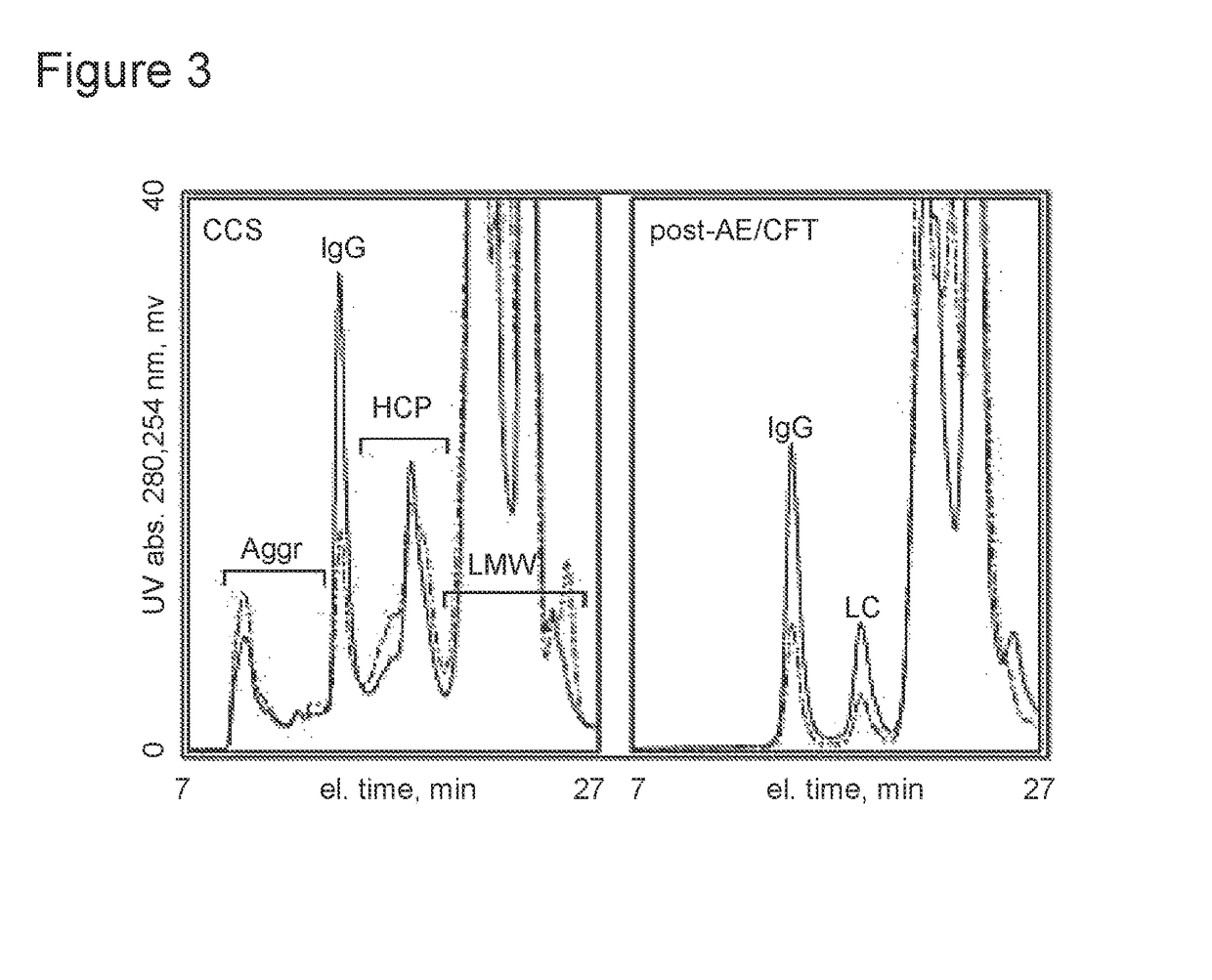Selective binding of biological targets to solid phase ureides
a biological target and solid phase technology, applied in the preparation of sugar derivatives, peptides, viruses, etc., can solve the problems of imposing the need for an additional processing step, requiring extensive process development, and immobilized antibodies on the surface, so as to reduce the infectivity of the recovered virus, reduce the liquid volume, and reduce the effect of liquid volum
- Summary
- Abstract
- Description
- Claims
- Application Information
AI Technical Summary
Benefits of technology
Problems solved by technology
Method used
Image
Examples
example 1
Purification of the Virus, Bacteriophage M13 by Coprecipitation with Allantoin
[0074]Phage cell culture supernatant was co-precipitated by addition of allantoin at a weight to volume ratio of 7%. pH was about 7.0. Conductivity was 20 mS. The virus was recovered by dissolving the allantoin in 50 mM Hepes, 150 mM NaCl, pH 7.0. Phage recovery was about 70%. Greater than 99% of proteins and small molecule contaminants were eliminated with the supernatant.
example 2
Co-Precipitation of Bacteriophage M13
[0075]Example 1 was repeated at pH values of 5.0, 6.0, and 8.0% allantoin. Co-precipitation efficiency over the range of both examples, as judged by removal from the supernatant, was inversely correlated with pH.
example 3
Co-Precipitation of Bacteriophage M13
[0076]Example 1 was repeated at NaCl concentrations corresponding to conductivity values of 40, 60, 80, and 100 mS / cm. These salt concentrations correspond with about 400, 600, 800, and 1000 mM NaCl. Precipitation efficiency, as judged by removal of virus from the sample, was directly correlated with conductivity. Optimal co-precipitation occurred at 400 mM NaCl. This was interpreted to reflect suppression of mutual electrostatic repulsion among viral particles with the result of supporting higher packing density of the particles on the ureide surface.
PUM
| Property | Measurement | Unit |
|---|---|---|
| size | aaaaa | aaaaa |
| pH | aaaaa | aaaaa |
| size | aaaaa | aaaaa |
Abstract
Description
Claims
Application Information
 Login to View More
Login to View More - R&D
- Intellectual Property
- Life Sciences
- Materials
- Tech Scout
- Unparalleled Data Quality
- Higher Quality Content
- 60% Fewer Hallucinations
Browse by: Latest US Patents, China's latest patents, Technical Efficacy Thesaurus, Application Domain, Technology Topic, Popular Technical Reports.
© 2025 PatSnap. All rights reserved.Legal|Privacy policy|Modern Slavery Act Transparency Statement|Sitemap|About US| Contact US: help@patsnap.com



